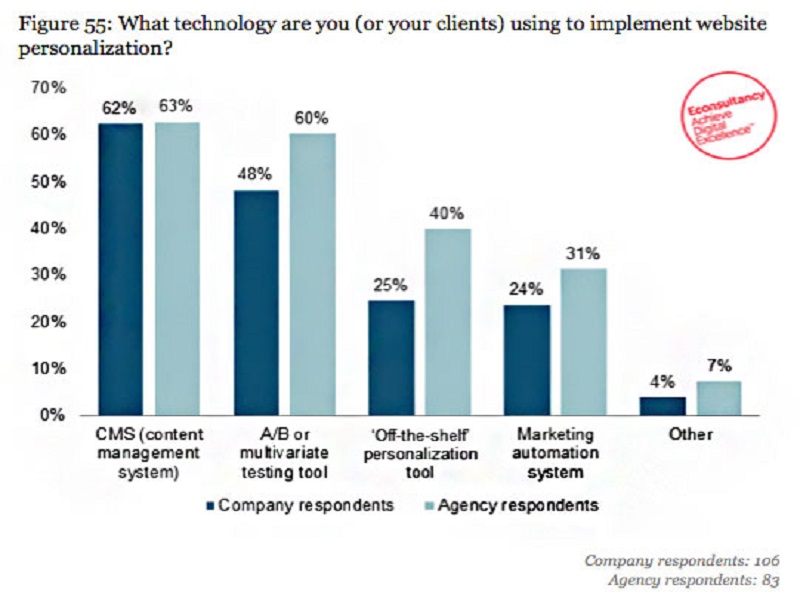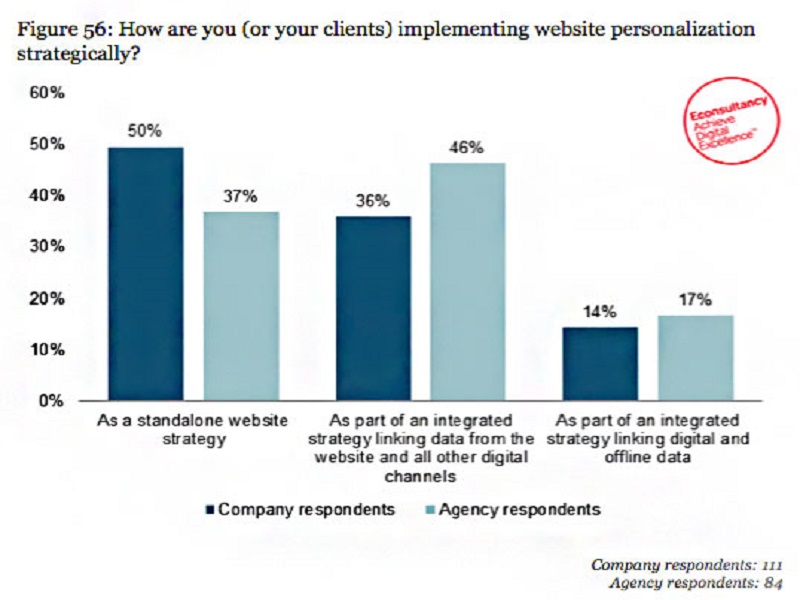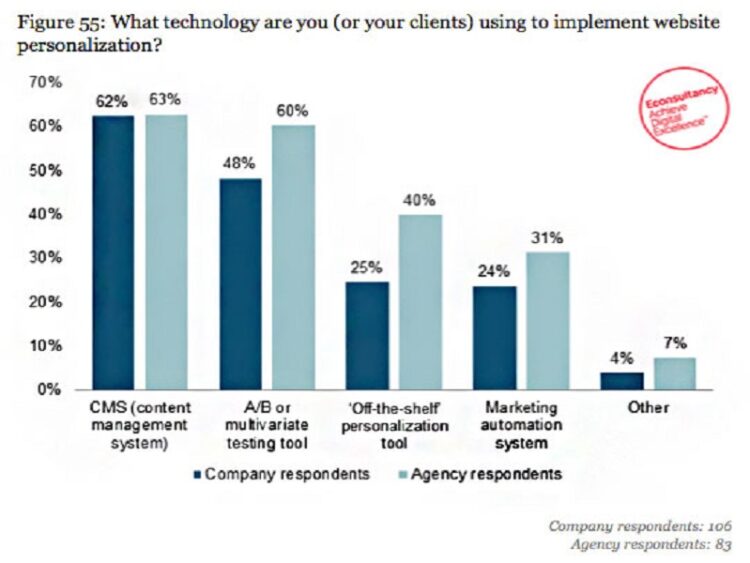
According to research by Econsultancy and RedEye, 50% of marketers’ personalization strategies are “standalone,” using only on-site data to target content and offers, as opposed to being integrated with data from other digital channels, such as email marketing, social, mobile apps, paid search, affiliate and offline.
Standalone personalization does positively impact conversion rates — 93% of Econsultancy respondents report an increase in conversion rates since implementing personalization. Basic segmentation strategies like geography, referring source or campaign, categories and products viewed, search queries, new vs. repeat visitors or customers, device type and the like can all be used to improve the relevance of the customer experience. Personalization engines can roll in wisdom-of-the-crowds and predictive targeting to make it even better.
But for e-businesses that want to fully embrace contextual commerce, the standalone solution misses the opportunity to target more specific merchandising, offers and guided customer journeys on-site, and to offer consistent personalization beyond the storefront — mobile apps, email, SMS and in-store offers.
Personalization technology
Econsultancy study reports the majority of marketers use content management systems and A/B or multivariate testing tools for site personalization (a business is not limited to a single technology and may use 2 or more in conjunction):
Marketing cloud vendors that offer a suite of integrated products like campaigns, analytics, social, testing and personalization solve much of the integration challenge, but don’t always integrate with every data point and system a business may use.
To fully integrate data sources, a business may individually wire data sources to CRM, CMS and ecommerce platforms. This approach is IT intensive, slow and costly, and doesn’t always work.
An alternative is to use a commerce integration platform that connects data sources and tools into a unified API which can connect to a CMS or marketing cloud platform. Not only does this simplify development for IT, but also allows systems integrators, digital agencies and marketers to manage experiences without IT, allowing for quicker innovation.
What can you do with fully integrated personalization?
There are an infinite number of use cases for integrated personalization. Here are just a few scenarios of what a business can’t do with standalone personalization strategy and technology:
A customer researches Widget online evidenced by Google Adwords referral, product page views and repeat visits, but converts in-store. Connect this data to the commerce platform and marketing tools to stop recommending Widget on the home page, and start populating merchandising zones and email with compatible Widget accessories, or products typically purchased “next” based on online and offline data. Stop retargeting Widget to this customer on Facebook and around the Web. Credit Adwords campaign for the offline sale.
page, and start populating merchandising zones and email with compatible Widget accessories, or products typically purchased “next” based on online and offline data. Stop retargeting Widget to this customer on Facebook and around the Web. Credit Adwords campaign for the offline sale.
A fashion retailer’s existing customers actively use Pinterest as a bookmarking tool, and are now starting to purchase pinned items at a later time directly through the Pinterest app. The retailer wants to use Pinterest’s API to connect back into its email marketing program to ensure future emails are relevant to what customers have pinned and purchased.
A software-as-a-service company wants to connect a subscriber’s product usage data to personalize its website, mobile app and marketing campaigns, specifically targeted around renewals and upgrades. It also wants to use this data to predict and mitigate churn, sending triggered content and offers to save the customer, whilst A/B testing creative, timing and frequency of these tactics.
The ability to integrate any data source and deliver a consistent, personalized experience across touchpoints is a dimension of a business’ digital maturity. While a site can offer a decent personalized experience and reap the conversion benefits of a standalone strategy, an integrated, cross-channel solution will allow you to personalize consistently across touchpoints, and gather the most complete customer view possible.
For online retailers and brands that want to move ahead in digital maturity, Elastic Path offers the Advanced Commerce Maturity Scale, a tool to self-assess your company’s ability to conduct Omnichannel, experience‐driven commerce across touchpoints. The ACMS highlights areas of your business that constrain your ability to succeed across four dimensions: Organization, Strategy, Interaction and Technology; along with framework to help you understand which commerce solutions and strategies are best suited to the unique strengths and weaknesses of your enterprise today, and what’s required to move up the digital maturity curve according to your long-term goals.



